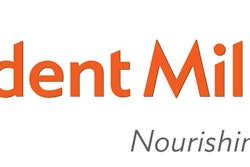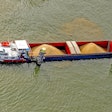The rate of injuries is falling in the grain handling industry, but the number of Severe Injuries and Fatalities (SIF) have remained the same. Tim Boyer, CIO of DEKRA/RCI, dispelled the long-held belief that SIFs would decrease because of the pressure to reduce other injuries at his GEAPS Exchange and Expo 2019 session in New Orleans on March 12.
Severe Injuries are defined as a life-threatening or life-altering injury, while fatalities are self-explanatory. According to Boyer, most SIFs are avoidable if the precursors are looked for. He left the crowd with six takeaways.
- Don’t expect SIF prevention by doing the same things you have been doing!
Even though traditional are still important, they will not stop SIFs.
- The OSHA 300 log report is misleading when it comes to SIF exposures.
Many SIFs are miscategorized as other injuries and vice versa, or they go unreported.
- The SIF blind spot is significant.
Risk control systems in SIFs were either missing, deficient or not complied with.
- Incident investigations aren’t as good as you think they are.
Investigations tend to be exposure focused rather than employee focused. Investigations should look at:
- Contributing factors
- Root causes
- Precursors
- Longitudinal analysis
- The effectiveness of corrective actions
- Tracking of recommendations
- Effective communication of lessons learned
- Case narratives with adequate descriptions and context
- To find SIF precursors you must increase your field of view.
The hunt for SIF precursors should include:
- Looking at potentials for incidents
- Engagement of employees
- Make sure to check if first aid incidents and near misses are being reported
- Investigations
- Audits
- Behavior-based safety observations
- Employee interviews
- SIF hunts
- SIF events are not one-offs or new. The precursors have been there a long time.
Boyer explained that communication with employees is vital. Not only will they be able to spot 85% of a facility's SIF precursors, but are the front line in making sure SIFs don’t happen in the first place.
“Have the conversation where you explain to the employee that this is something that could kill them, not something that killed someone else,” explained Boyer. “It will quickly become a different conversation”


















